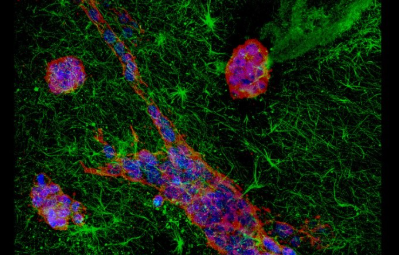IISc Study uncovers Cancer Cell Adaptation During Migration
Recent research from the Indian Institute of Science (IISc) sheds light on cancer cell behaviour, published in the Biophysical Journal, and examines how the microenvironment influences cancer cell movement. These dynamics are crucial for tackling metastasis, the process by which cancer spreads.
Types of Ovarian Cancer Cells
The study focused on two ovarian cancer cell lines – OVCAR-3 and SK-OV-3. OVCAR-3 cells have a rounded shape, while SK-OV-3 cells are elongated. Both types are capable of invading surrounding tissues.
Experimental Setup
Researchers placed both cell types on surfaces that simulated healthy and diseased tissues. Soft surfaces represented healthy tissue, while stiff surfaces mimicked scarred tissue around tumours. This setup allowed scientists to observe how the cells moved in different conditions.
Movement on Soft Surfaces
On soft surfaces, both OVCAR-3 and SK-OV-3 cells exhibited slow and random movement. This behaviour resembles how cancer cells might move in healthy tissue, denoting the influence of surface stiffness on their mobility.
On stiff surfaces, the behaviour of the cells changed . OVCAR-3 cells moved more than SK-OV-3 cells, which was unexpected. The researchers noted that OVCAR-3 cells displayed a unique movement pattern called “slipping.”
Slipping Movement
Typically, a cell’s movement direction aligns with its shape. However, OVCAR-3 cells did not follow this pattern on stiff surfaces. Instead, they appeared to slide rather than move in a straight line, indicating a complex interaction with their environment.
The research team aims to delve deeper into the mechanisms driving these movements. They plan to employ advanced methods to study cancer cell behaviour in more intricate 3D environments. This could enhance understanding of ovarian cancer, known for its rapid spread and treatment challenges.
Important Facts for Exams:
- IISc: The Indian Institute of Science is a premier research institution in Bangalore. It focuses on advanced scientific studies and has contributed to various fields, including cancer research.
- OVCAR-3: OVCAR-3 is a cell line derived from ovarian cancer. It exhibits a rounded shape and is known for its ability to invade surrounding tissues and respond uniquely to environmental stiffness.
Month: Current Affairs - November, 2024
Category: Science & Technology Current Affairs


